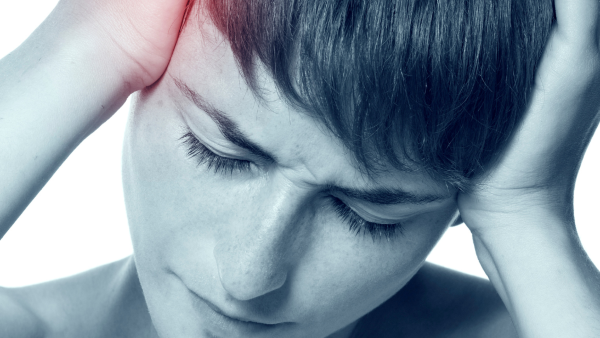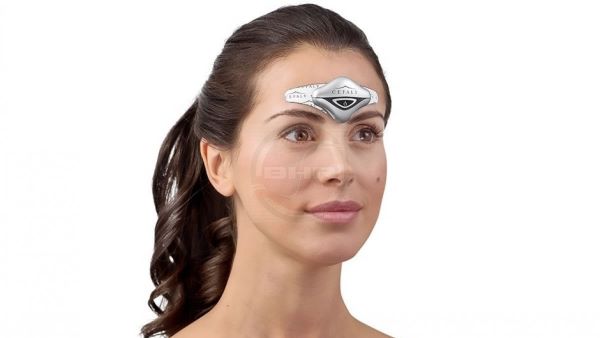Missed part 1? Check out what migraine is and what its causes are
What is migraine?

Before delving into the different types of migraine, we’ll quickly recap what migraine is. Migraine is a neurological disease that causes a range of symptoms, most notably headaches. The significant difference between headaches and migraine is the severity of pain.
Migraine head pain is more severe than headaches and can be debilitating. In severe cases, the pain can last for a few days, unlike a headache, which only lasts a few hours. Migraine is a primary headache, meaning it has no underlying health condition or illness that causes it.
Migraine can display a range of symptoms along with head pain, including visual disturbances, nausea, dizziness, or a numb, tingling feeling. Many triggers can cause a migraine attack and are a result of certain nerves in blood vessels sending pain signals to the brain.
The different types of migraine
There are many different types of migraine, each displaying varying symptoms and severity. Migraine is different for everyone, with people experiencing a different kind of migraine. However, migraine with aura is the most common.
Migraine with aura

Migraine with aura is one type of migraine and is sometimes called classic migraine. Most migraine sufferers experience migraine with aura. This type of migraine is categorised by its aura that occurs before the head pain. Around 1 in 3 people experience this type of migraine.
An aura is any sensory disturbance and can be visual, sensory, or dysphasic (difficulties with verbal communication). Of all the sensory disturbances, 90-99% of people will experience a visual aura. Only 10% of people will experience a dysphasic disturbance.
An aura typically starts gradually over a 5 to 20-minute period and can last up to an hour, signalling a migraine attack. The disturbances experienced during an aura result from the nervous system. An aura is the second stage of a migraine.
While vision is the most affected, there are several other symptoms of an aura:
- Blurry vision.
- Tingling or numb feeling on one side.
- Ringing sound in the ears.
- Noticeable changes to your smell, taste, or touch.
- A heavy feeling in the arms or legs.
- Seeing black dots, light flashes, wavy lines, or hallucinations.
The cause of auras and why they happen before a migraine headache is still unknown. However, some research has hinted it could be related to a slow wave of altered brain activity that causes temporary nerve changes and blood flow to the brain.
Migraine with a brainstem aura
Migraine with a brainstem aura is another type and is considered rare. Sometimes called a basilar-type migraine, a brainstem aura migraine can be confused with a stroke as they share similar symptoms, such as slurred speech, numbness, and vertigo. These symptoms will occur gradually before a headache, similar to an aura.
Migraine without an aura
Alongside a migraine with an aura, there is a migraine without an aura. This is where a migraine attack does not have any sensory disturbances beforehand. The moderate to severe headache begins without any pre-symptoms.
Similar to a migraine with an aura, the headaches are made worse by exposure to light, certain sounds, or physical activity. The pain is often felt on one side of the head. A migraine without an aura is sometimes referred to as an ‘episodic’ migraine.
The symptoms of this type of migraine are the same as a migraine with an aura. The only difference is there is no second phase during an attack (the aura stage). This type of migraine can last anywhere between 4 to 72 hours.
Silent migraine

A silent migraine is another type of migraine people experience. Like a migraine with an aura, a silent migraine causes aura symptoms but not headache afterwards. Silent migraines can sometimes be called acephalgic migraine.
Other migraine symptoms can still develop with a silent migraine. However, this migraine typically only lasts for around 30 minutes. Someone who experiences this type of migraine is more likely to experience different types of migraine.
It may be that some or all migraine attacks are silent. Those aged over 50 are more likely to experience this type of migraine. Depending on the severity of symptoms, silent migraines can be misdiagnosed as a stroke.
Chronic migraine
Unlike a silent migraine, which produces no head pain, a chronic migraine causes severe and debilitating headaches. However, only around 2 in 100 people are likely to experience this type of migraine.
Chronic headaches usually mean having headaches 15 or more days a month. The symptoms of a chronic migraine are the same as a migraine with aura, including headaches, increased sensory sensitivity, nausea, and vomiting.
Chronic migraine will gradually increase over time, becoming more frequent. There are rare instances, however, of people entering remission within two years of developing chronic migraine. The pattern of migraine attacks will differ for each person.
Certain medical conditions are more likely to increase the risk of chronic migraine, including:
- Depression.
- Anxiety.
- Sleep apnoea.
- Pain conditions, such as fibromyalgia.
- Postural orthostatic tachycardia syndrome.
Those with chronic migraines often have a lower quality of life due to the severity of symptoms, impacting social, work, and physical life. Medication overdose headaches are also common in those with chronic migraine due to excessive taking of pain relief medication.
Cefaly Dual for Migraine Treatment and Prevention

Cefaly Dual is a device for the treatment and prevention of migraine. Electrical impulses delivered to the trigeminal nerve’s main branch help relieve and reduce the severity of migraine headaches.
The device uses electrodes placed bilaterally on the forehead, just above the eyebrows. As the device uses external trigeminal nerve stimulation (e-TNS), Cefaly Dual can replace or reduce the consumption of pain medication for a better quality of life.
Learn more about Cefaly Dual and how it can help your migraine
Vestibular migraine
A vestibular migraine is another type that causes balance problems, including vertigo and dizziness. These symptoms will occur alongside other migraine symptoms, including sensory sensitivity, nausea, and headache.
Vertigo attacks can occur without a headache afterwards. Vertigo in vestibular migraine can be spontaneous or by being in a particular position, such as standing up or lying down visually-induced or specific head movements.
Abdominal migraine
Another type of migraine is abdominal migraine, which is mainly experienced in children. Around 4 in 100 children are likely to experience abdominal migraine, although some adults can also experience it. This migraine typically improves with age.
Abdominal migraine can cause symptoms such as moderate to severe stomach pain alongside sickness and vomiting. Headaches may not always occur with this type of migraine. Abdominal migraine is an idiopathic disorder, meaning it is not understood why they develop.
Hemiplegic migraine
Hemiplegic migraine is a rare type of migraine that causes a temporary weakness in one side of the body. Hemiplegic is a term for paralysis and occurs during a hemiplegic migraine. A temporary weakness occurs on the side of the body, alongside other migraine symptoms.
Hemiplegic migraine symptoms are like those of a stroke and can be unnerving. However, the weakness will typically subside after 24 hours. However, the weakness may last anytime from one hour to 7 days. A headache sometimes follows the weakness.
Menstrual migraine

The last type of migraine we will cover is menstrual migraine. As the name suggests, menstrual migraine occurs because of hormone changes from menstruation. While men can experience menstrual migraines, they are more common in women.
Unlike other types of migraine, menstrual migraine is the least responsive to treatments, such as pain relief. Attacks may also last longer than different types of migraine. Symptoms, such as hormone headaches, occur just before or during a woman’s period and can last for a few days.
There are many types of migraine, each displaying different symptoms. Knowing the type of migraine you have can help in managing the relief and treatment for treating such symptoms. While some migraine types are rarer than others, they can help you achieve a better quality of life. It can also help you seek treatment options, such as Cefaly Dual.
For migraine support and advice, visit The Migraine Trust or contact a healthcare specialist.

